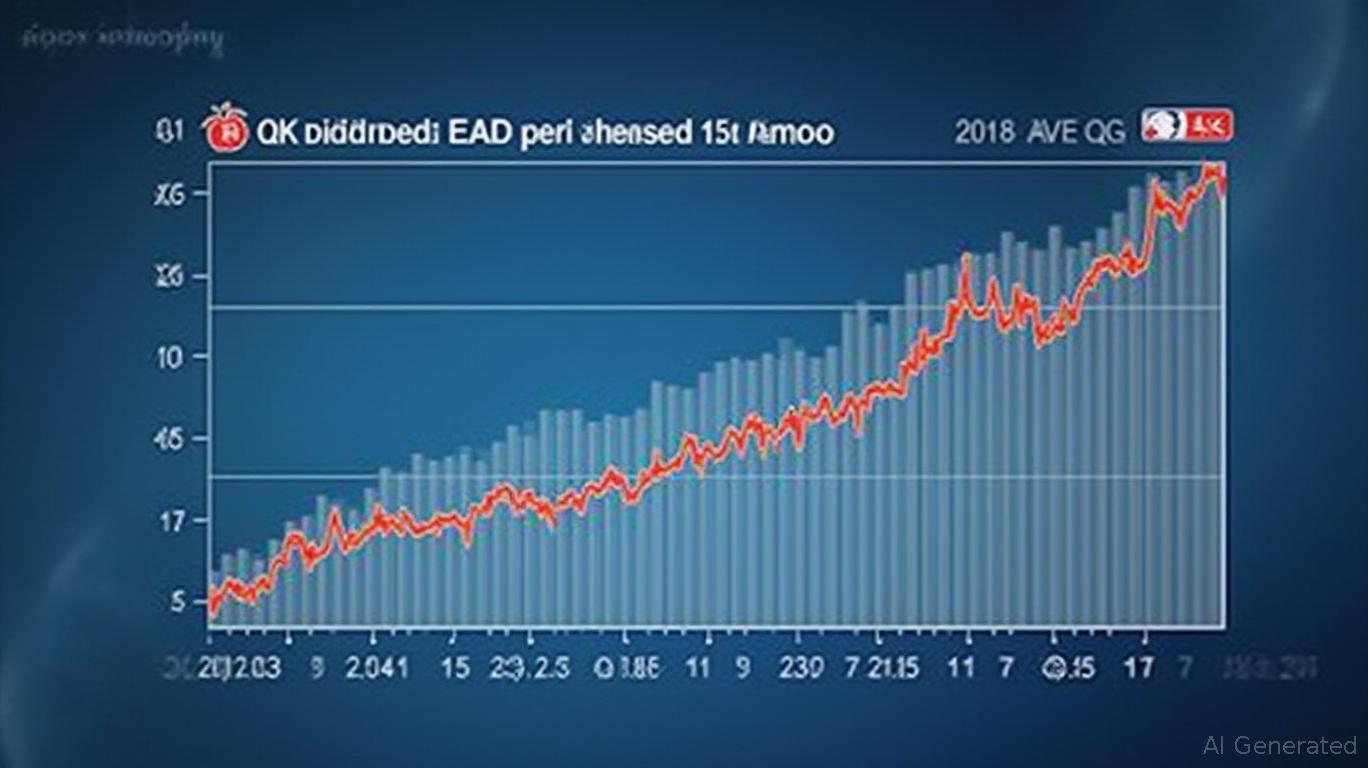Jabil's Steady Dividend Strategy: A Reliable Choice in Volatile Markets?
Jabil Inc. (NYSE: JBL), a global leader in electronics manufacturing services, has maintained its quarterly dividend at $0.08 per share for over a decade, with the latest payout of June 3, 2025, set to continue this tradition. For income-focused investors, this consistency may seem reassuring. But what does Jabil’s dividend policy signal about its financial strategy, and how does it stack up against broader market dynamics?

A Decade of Unwavering Dividends
Since 2012, Jabil has paid $0.08 per share quarterly, totaling $0.32 annually—a policy unchanged through economic cycles, including the 2020 pandemic and recent tech sector turbulence. This stability is notable, but it comes with trade-offs. The company’s CADI (Consecutive Annual Dividend Increases) score of zero reveals a deliberate focus on steady payouts rather than growth. For investors prioritizing dividend hikes, Jabil’s approach may fall short, but for those valuing predictability, it offers a predictable cash flow stream.
Low Yield, High Sustainability
With a current dividend yield of just 0.2%—based on a share price of $133.87 and annual payments of $0.32—Jabil’s income appeal is muted compared to sectors like utilities or real estate investment trusts (REITs). However, its dividend cover ratio of 2.0x (earnings per share exceed dividends by a factor of two) underscores financial prudence. This suggests Jabil can comfortably sustain its dividend even amid earnings fluctuations.
A graph showing JBL’s stock price hovering between $80 and $140 since 2020, while its dividend yield fluctuates between 0.2% and 0.5%, inversely tracking share price movements.
Navigating the Trade-Off Between Stability and Growth
Jabil’s dividend strategy reflects its role as a contract manufacturer: earnings are tied to client demand and global supply chain dynamics. Maintaining a fixed dividend shields investors from volatility but also limits upside for those seeking income growth. In contrast, peers like Flex Ltd. (FLEX), which pays a higher yield (~0.6%) and has increased dividends steadily over the past five years, offer a different value proposition.
Market Context and Long-Term Considerations
Jabil’s $14.4 billion market cap positions it as a mid-cap player in the electronics sector, where earnings growth is often tied to tech innovation cycles. While its dividend provides ballast in volatile markets, investors must weigh this against its modest yield. The company’s consistent payout since 2012—through recessions and booms—signals strong corporate governance, but it also raises questions about reinvestment priorities.
Conclusion: A Steady Hand, Not a Rocket
Jabil’s dividend policy is a testament to its financial discipline and operational resilience. For conservative investors seeking a low-risk income stream, JBL’s reliability—backed by a 2.0x cover ratio and 13-year dividend consistency—is compelling. However, the 0.2% yield makes it unattractive for those chasing high returns or dividend growth.
The decision hinges on investor goals:
- Income stability: Jabil delivers predictability, but at a cost of modest returns.
- Growth focus: Look elsewhere for higher yields or dividend hikes.
With Jabil’s dividend forecast to remain steady through 2025 and beyond, its value lies not in excitement but in dependability—a niche it fills admirably. For now, the question remains: In a world hungry for yield, is steady enough? The data suggests yes—for those who can accept the trade-offs.










